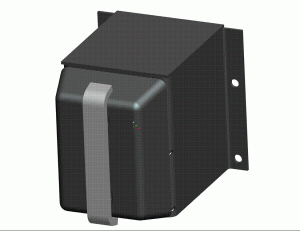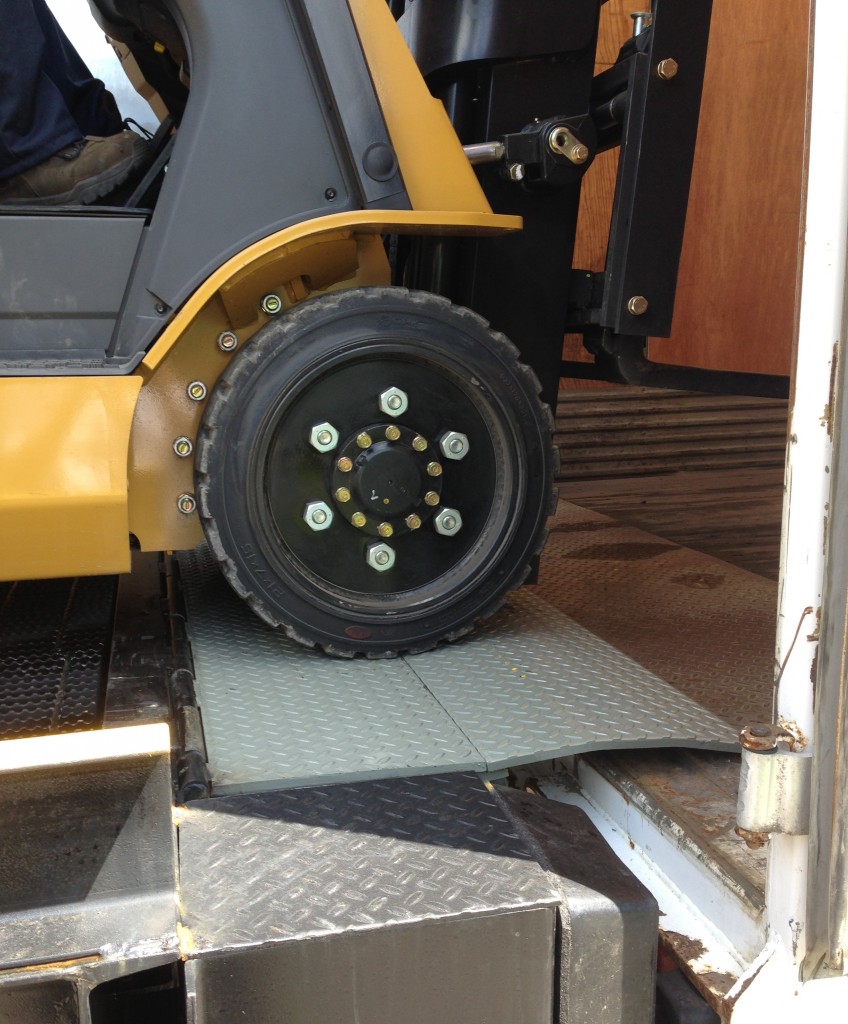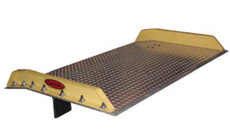You’re busy. We get it. You’re moving loads in and out of your facility all day, every day. Taking time for recommended maintenance of your dock equipment can seem like a time drain—but you’ll be glad you did.
As with any equipment, maintaining it now means fewer big-ticket repairs down the road. Just imagine how long your car engine would last without routine oil changes. Just as sticking to the manufacturer’s recommended maintenance schedule for your vehicle helps ensure reliable transportation, scheduling time for maintenance checks on your edge of dock leveler can actually save time and money down the road.
And better to schedule time now rather than endure downtime when a critical load needs to leave your facility. Fortunately, our EOD levelers require minimal maintenance, including the simple lubrication of hinges, which come equipped with grease fittings.
Read on for step-by-step procedures for keeping your EOD leveler functioning properly.
Safety Precautions
First things first.
Before you service your edge of dock leveler, be sure to take necessary safety measures to avoid injury (and by injury, we mean serious injury. This is, after all, heavy-duty steel equipment capable of handling several thousand pounds.) Reading manuals can be tedious, but in this case, you’ll be glad you did.
Be aware that:
- The EOD leveler moves toward you.
- For maintenance, the leveler should be in the raised position and secured with the maintenance strut. (More on that important piece of equipment below.)
- Always return the edge of dock leveler to the stored position after service.
Got it? Good. Now you’re ready to insert the maintenance strut.
- Using the hand lever, position the EOD leveler in the full back position. See Fig. 18 from the manual for reference.
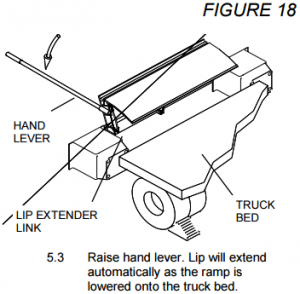
- While one person holds the hand lever down (Fig. 18 again), another person standing on the drive surface must position the lip to its full upright position. Take a look at Fig. 25 from the manual to confirm correct positioning.
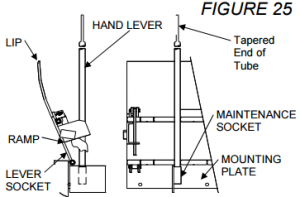
- With the ramp and lip in the full upright position, move the lever to the maintenance socket location. See Fig. 25 again for reference.
By the Manual
Safety precautions? Check. Equipment prep? Check. Now you’re ready to tackle the task at hand. Remember, your YARD RAMP Site equipment is warrantied to be free from defects in material and workmanship under normal use for a period of one year, provided that the purchaser maintains and operates the edge of dock leveler in accordance with the owner’s manual. Go by the book!
- Every 90 days, with the dock leveler in the maintenance position, inspect all moving parts for wear or damage. Repair or replace as necessary.
- Inspect all welds, and repair or replace as necessary.
- If linkage parts must be replaced due to wear or damage, raise the leveler to its rear-most position by means of the hand lever and secure with the maintenance strut. Again, reference Fig. 25 from the manual.
- Lubricate all grease fittings every 90 days.
- To increase spring tension, turn bolts in evenly. To decrease spring tension, turn bolts out evenly.
- Every 90 days, inspect the dock bumpers: 4” of bumper protection is required. Worn, torn, loose or missing bumper must be replaced.
- Every 90 days, check all labels and replace as necessary. You can find a list of part numbers for your edge of dock leveler on page 26 of your owner’s manual or download the PDF.
- Every 6 months, verify that you have the latest manual. Follow the link above for the most current version.
- Hydraulic edge of dock levelers only: Seasonally change the hydraulic fluid for ambient temperatures, or if there is any evidence of accumulating condensation creating water contamination.
Fluid Recommendations
Finally, don’t use brake fluid or any other fluids not approved by Copperloy. Use of such fluids may degrade the hydraulic systems seals and hoses.
The first choice for fluid is Citco AW-46(200) hydraulic fluid. This is the fluid we normally supply with your unit. It’s suitable for an ambient temperature range of -10°F to 100°F (-23°C to 38°C).
We’re confident these steps will become second nature, once you get on a routine maintenance schedule. Have other maintenance-related questions? We’d love to hear from you. Contact us today.


